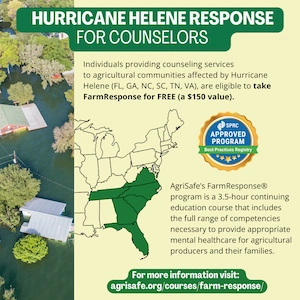Last updated on July 19th, 2024 at 02:56 pm
Reproductive Health Resources
Women have significant exposure to agricultural work and therefore related health and safety risks from farm exposures. Women who are pregnant or planning a pregnancy, especially those currently performing farm work, should be informed of the implications of exposure before, during, and after pregnancy, and assisted in making decisions that are appropriate for their individual work and home situations. Read about general reproductive hazards from MedlinePlus. However, there are hazards specific to agriculture.
Hazards
Risks to women who are pregnant or planning to be pregnant include:
Herbicides
Herbicides are used to kill undesirable plants or weeds.
Exposures: Mixing and applying herbicides and fungicides up to 2 years before attempting conception is associated with observed lower fertility.
Risk: Could lower rates of fertility.
Needlestick Injuries
Needlestick injuries are wounds caused by needles that accidentally puncture the skin.
Exposures: Livestock production hormones Oxytocin and Prostaglandin
Risk: May cause abortion in pregnant women.
Carbon Monoxide
Carbon monoxide is a colorless, odorless, tasteless gas produced by burning gasoline, wood, propane, charcoal, or other fuel.
Exposures: Livestock buildings and high pressure washers
Risk: High for women and elevated risk in unborn fetus including low birth weight and slowed mental development.
Zoonotic Diseases
Zoonotic diseases (also known as zoonoses) are caused by infections that spread between animals and people. Pregnant women have an altered immune system during pregnancy.
Exposures: Direct/indirect contact, vector-borne, foodborne
Risk: May cause abortion in pregnant women.
Nitrate Toxicity
Infants who are fed formula made with water high in nitrate concentrations (>10 mg/L) have the potential to be poisoned.
Risk: A congenital health disease known as Blue Baby Syndrome
PPE
Personal protective equipment can reduce the risk of agricultural hazards to women who are pregnant or planning a pregnancy. Appropriate PPE includes:
- Coveralls
- Eyewear
- Respiratory protection
- Footwear
Reproductive Health Resources
Articles
Fact Sheets
Webinars
Page updated: August 2022

